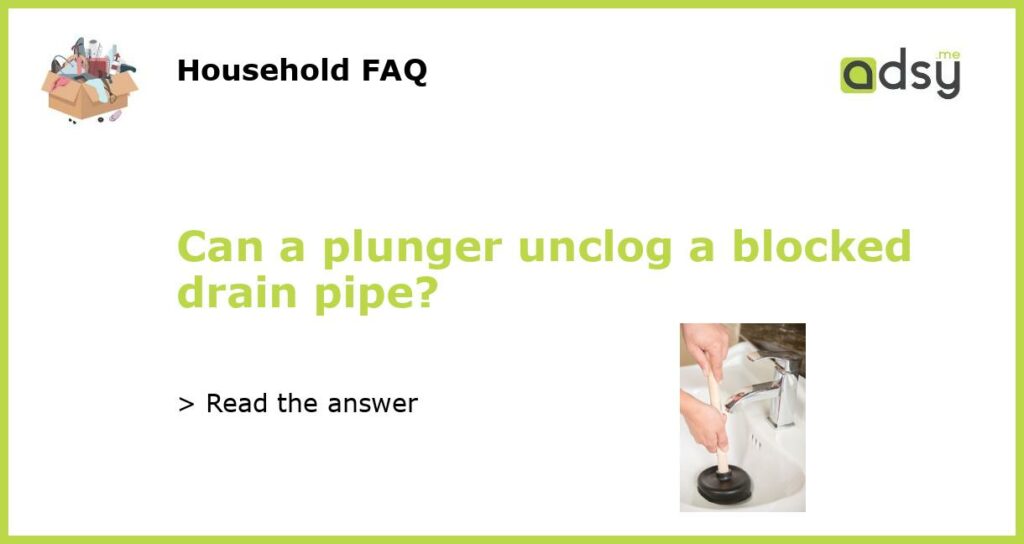Yes, a plunger can unclog a blocked drain pipe
If you have a blocked drain pipe, you may be wondering if a plunger is an effective tool to use. The short answer is yes, a plunger can indeed unclog a blocked drain pipe. Plungers are a commonly used tool for clearing blockages in drains and toilets. They work by creating pressure and suction to dislodge and remove the blockage. However, it’s important to use the plunger correctly and take some precautions to ensure success in unclogging the drain pipe. In this article, we will explore how plungers work, how to use them effectively, and when you may need to consider other methods.
How does a plunger work?
Plungers work on the principle of creating pressure and suction. When you push the plunger down into the drain pipe and then pull it back up, it creates a vacuum effect. This vacuum effect can dislodge and move the blockage. In some cases, the plunging action alone is enough to break up the blockage and allow it to move through the pipe. However, in other cases, you may need to use additional techniques or tools to fully clear the blockage.
How to use a plunger effectively?
Using a plunger effectively requires following a few simple steps. First, ensure that you have a good seal between the plunger and the drain. This can be achieved by wetting the rim of the plunger or adding some petroleum jelly to help create a tight seal. Next, push the plunger down firmly into the drain pipe and then pull it back up quickly and forcefully. Repeat this plunging action several times, gradually increasing the speed and force with which you plunge. This can help to dislodge the blockage and move it through the pipe.
It’s important to note that you should not use a plunger if you have recently used chemical drain cleaners or if there is standing water in the sink or tub. The plunging action can cause the chemicals to splash up, potentially causing injury. In addition, if there is standing water, the plunger may simply push the water around without effectively clearing the blockage. In these cases, you may need to consider alternative methods such as using a drain snake or calling a professional plumber.
When to consider other methods?
While plungers are an effective tool for clearing many types of blockages, there are some situations where you may need to consider other methods. If you have tried plunging and the blockage is still not clearing, it may be time to try a different approach. Using a drain snake or a plumbing auger can be effective for removing blockages that are further down the pipe. These tools allow you to reach deeper into the pipe and physically break up or remove the blockage.
In some cases, the blockage may be caused by a more serious issue such as a broken or collapsed pipe. If you suspect this is the case, it is best to contact a professional plumber who can assess the situation and recommend the appropriate course of action. Attempting to unclog a blocked drain pipe in these situations can cause further damage and potentially lead to costly repairs.
In conclusion
In conclusion, a plunger can be an effective tool for unclogging a blocked drain pipe. Plungers work by creating pressure and suction to dislodge and remove the blockage. When using a plunger, it’s important to ensure a good seal, use a forceful plunging action, and take precautions if you have recently used chemical drain cleaners or if there is standing water in the sink or tub. If the blockage does not clear with plunging, or if you suspect a more serious issue, it is best to consider other methods or contact a professional plumber. With the right technique and precautions, a plunger can often save you time and money in clearing a blocked drain pipe.






